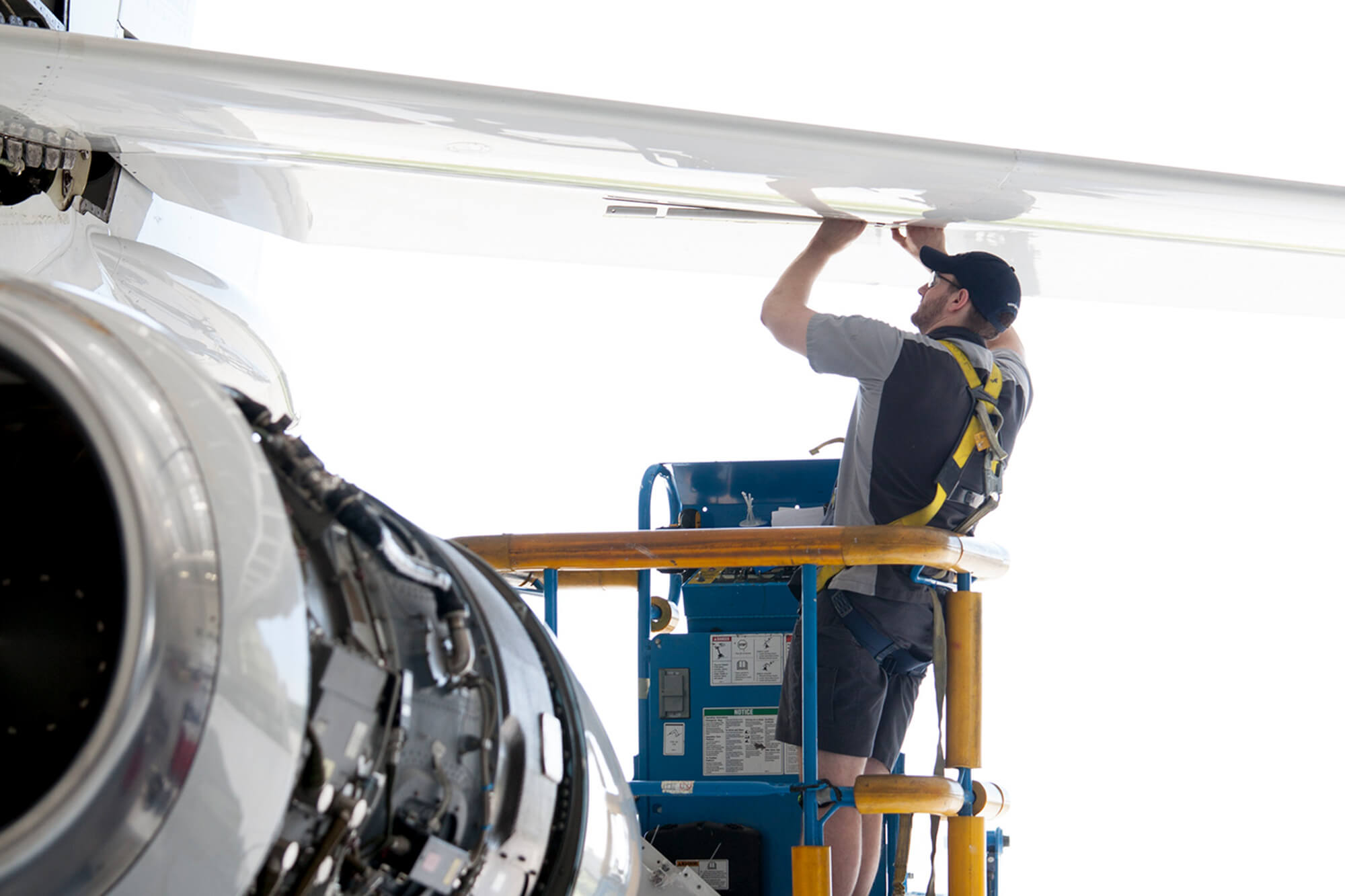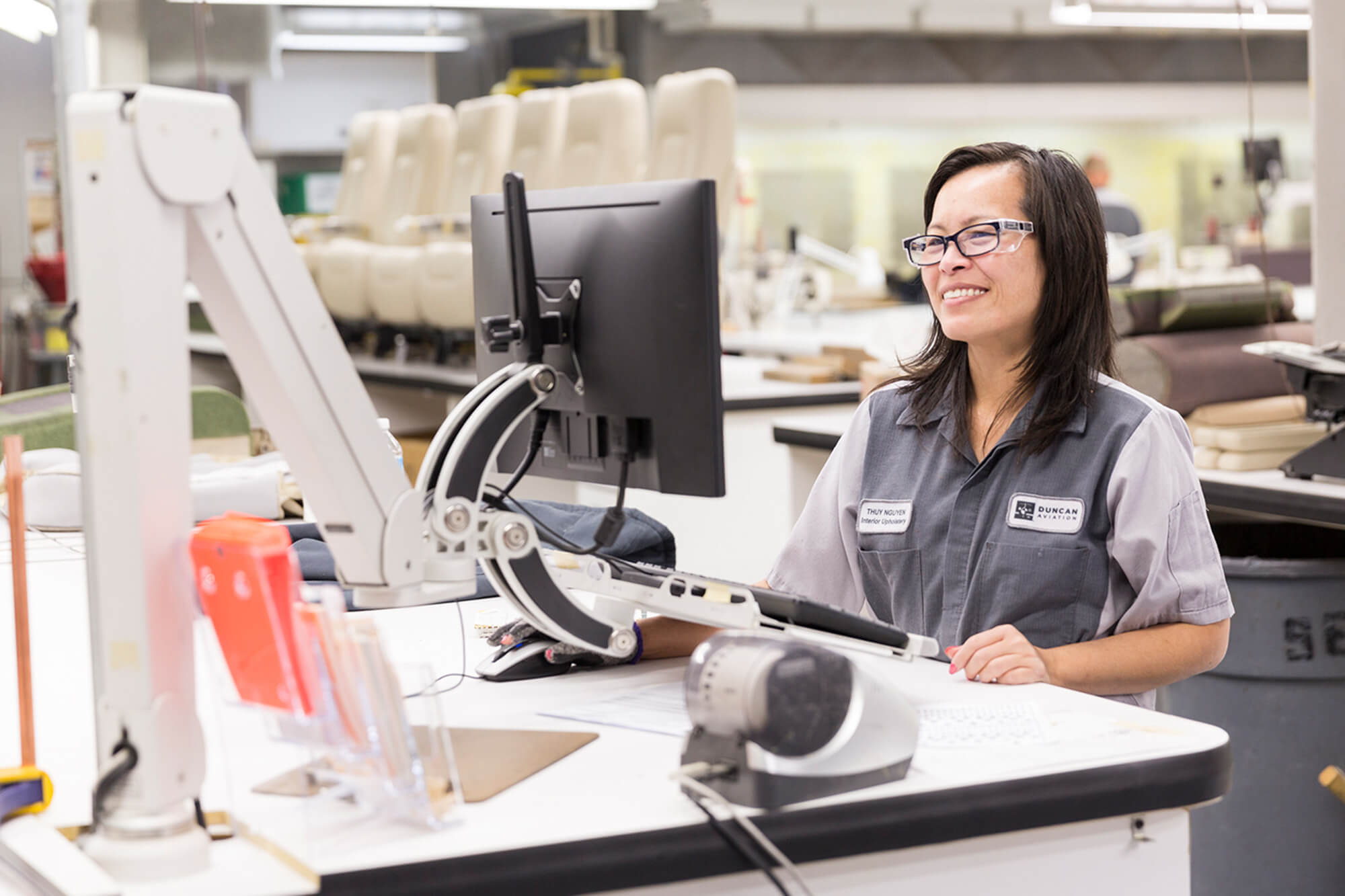

Oct. 7, 2019
Careful planning and communication are key.
What does it take to have a good aircraft service center experience? Customers and vendors both agree that careful planning and communication are key. They are the ingredients that build relationships and trust, avoid surprises, and go a long way to ensure an aircraft is delivered on time and on budget. Communication is especially important in addressing a customer’s expectations and any concerns.
Operators looking for a service center need to start by researching the capabilities of several maintenance, repair and overhaul (MRO) facilities. This is the time for customers to spell out their expectations, ask questions and develop a formal request for proposal.
“Customers need to know the capabilities of the service center,” says Susie Corn, sales manager at aircraft support company Duncan Aviation. “Know what they can do. Find out what kind of experience and people they have on staff. Visit the center and see for yourself.”
“Establishing needs and expectations through numerous conference calls and sometimes traveling to the center to meet the main players, as well as observing how the technicians work, should be part of the process,” suggests Sam Reid, who has 32 years’ experience managing airplanes and currently handles a Bombardier Global 6000 for Executive Jet Management at Washington, D.C.’s Dulles International Airport. “Do they protect the property [while work is underway]? Do they cover the leading edges, the seats and the carpet?”
First impressions can make or break relationships between aircraft operators and MROs.
“It’s important from day one to get off to a good start,” stresses John Holland, vice president of Trimec Aviation, an MRO in Fort Worth, TX. He emphasizes the need for MROs to be responsive to customers and understand their needs.
BUDGET AND SCOPE OF WORK
When planning to bring an airplane in for service, operators should consider what related or other near-term required work can be done during that visit. If the service center is planning to conduct a required inspection, look for other items needing attention while the aircraft is down, such as outdated seats or cabinets that need refinishing. Then meet with the MRO’s team to review all the pro-posed work.
“Don’t just plan for the immediate needs; look ahead,” said Marlin Priest of Pioneer Aviation Management, an advisory firm representing both repair centers and aircraft operators, particularly small ones without a dedicated maintenance manager.
“The MRO’s worse nightmare is for an operator to come in while the work is underway and ask for substantial, unscheduled work,” said Priest. “MROs will always do their best to finish on time and on budget. They want repeat business.” But unanticipated extra work can delay the entire project and drive costs up.
While budget is important, Priest recommends selecting a service center that can do the best job. “Larger MROs have well-trained technicians and have invested heavily in tooling and equipment to meet the manufacturer’s requirements.” he said. When dealing with a smaller MRO or repair station, ask if the facility employs master-level-certified technicians with formal training and currency on your model aircraft, Priest added.

ESTIMATING DOWNTIME
Customers can help a service center determine a realistic downtime by providing documents that enable maintenance technicians to better understand the aircraft and the extent of the job, said Dave Godo, regional sales manager for West Star Aviation, an Illinois-based MRO with 10 facilities throughout the U.S. These documents include wiring diagrams and completion drawings (since every aircraft is different), along with service bulletins, which may require ordering parts.
“Pre-order any service bulletin kits, since many have long lead times,” advised Godo. Also, if log entries are completed in a certain way, customers should provide a sample so the format can be followed, he added. John Holland recommends forwarding copies of the aircraft’s computerized aircraft can do the best job. “Larger MROs have well-trained technicians and have invested heavily in tooling and equipment to meet the manufacturer’s requirements.” he said. When dealing with a smaller MRO or repair station, ask if the facility employs master-level-certified technicians with formal training and currency on your model aircraft, Priest added. maintenance program cards to document airworthiness checks.
“The service center should ask for these items,” Godo noted. “Asking the right questions prepares the customer.” MROs should give realistic downtime projections, he added, because the customer will most likely have already scheduled the aircraft’s return to service based on that estimate.
For major inspections, factor in time for unknown items that may pop up to avoid giving customers false expectations by underestimating downtime, said Godo. “You don’t know what you’ll find – perhaps a cracked casting or corrosion issues.”
Finally, when considering multiple MRO proposals, make sure they’re “apples to apples,” said Susie Corn. For instance, some centers charge extra for labor to remove interior panels when per-forming inspections. Other companies include that in their pricing.
MONITOR WORK CLOSELY
Reid recommends maintenance man-agers should be in touch with the MRO program manager frequently throughout the day to follow the work. “Set the tone right from the start. You also need to know if something is found amiss during the evening shift to avoid any surprises in the morning,” he said.
It’s important for an aircraft owner or operator to have someone on site, said Priest. “Don’t just drop off the keys and leave. Have someone there during the discovery phase of the work so if some-thing unexpected appears, questions can be asked and decisions can be made right away. This eliminates management gaps and keeps everything on time and on budget.”
Corn agrees. “The customer has to be accessible to deal with issues that come up, such as corrosion. We’ll provide the solution, but the customer provides the direction.”
Communication after the work is done also is part of a good service-center experience, Holland said. “Reach out to your customers and make sure they’re satisfied. You need their feedback. When you never hear back, something’s wrong.”


 International Business Aviation Council Ltd.
International Business Aviation Council Ltd.